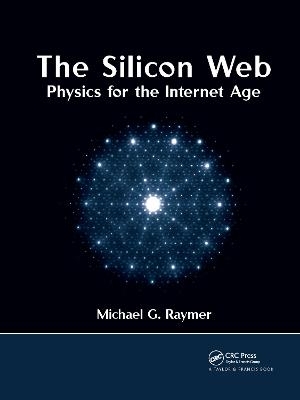
The Silicon Web
CRC Press (Verlag)
978-1-032-34030-2 (ISBN)
The technology behind computers, fiber optics, and networks did not originate in the minds of engineers attempting to build an Internet. The Internet is a culmination of intellectual work by thousands of minds spanning hundreds of years. We have built concept upon concept and technology upon technology to arrive at where we are today, in a world constructed of silicon pathways and controlled by silicon processors.
From computers to optical communications, The Silicon Web: Physics for the Internet Age explores the core principles of physics that underlie those technologies that continue to revolutionize our everyday lives. Designed for the nonscientist, this text requires no higher math or prior experience with physics. It starts with an introduction to physics, silicon, and the Internet and then details the basic physics principles at the core of the information technology revolution. A third part examines the quantum era, with in-depth discussion of digital memory and computers. The final part moves onto the Internet era, covering lasers, optical fibers, light amplification, and fiber-optic and wireless communication technologies.
The relation between technology and daily life is so intertwined that it is impossible to fully understand modern human experience without having at least a basic understanding of the concepts and history behind modern technology, which continues to become more prevalent as well as more ubiquitous. Going beyond the technical, the book also looks at ways in which science has changed the course of history. It clarifies common misconceptions while offering insight on the social impacts of science with an emphasis on information technology.
As a pioneering researcher in quantum mechanics of light, author Michael Raymer has made his own significant contributions to contemporary communications technology
Michael G. Raymer received his PhD from the University of Colorado in 1979. After a tenure on the faculty at the Institute of Optics, University of Rochester, he moved to the University of Oregon in 1988, where he became founding Director of the Oregon Center for Optics. His research focuses on the quantum mechanics of light and its interaction with atoms, molecules, and semiconductors, with applications in nonlinear optics, communications technology, and quantum information. In 1993, his group reported the first instance of experimental quantum-state tomography of light. He has been honored as Fellow of both the American Physical Society and Optical Society of America. He has served on the Committee on Atomic, Molecular, and Optical (AMO) Science, National Research Council, and Executive Committee of the American Physical Society's Division of Laser Science.
Introduction to Physics, Silicon, and the Internet. Principles of the IT Revolution. The Quantum Era: Digital Memory. The Internet Era: Optical Fibers, Light Amplification, Fiber Optics, Wireless Communication.
| Erscheinungsdatum | 14.06.2022 |
|---|---|
| Zusatzinfo | 590 Illustrations, black and white |
| Verlagsort | London |
| Sprache | englisch |
| Maße | 210 x 280 mm |
| Gewicht | 1440 g |
| Themenwelt | Mathematik / Informatik ► Informatik ► Theorie / Studium |
| Naturwissenschaften ► Physik / Astronomie ► Festkörperphysik | |
| ISBN-10 | 1-032-34030-4 / 1032340304 |
| ISBN-13 | 978-1-032-34030-2 / 9781032340302 |
| Zustand | Neuware |
| Haben Sie eine Frage zum Produkt? |
aus dem Bereich


